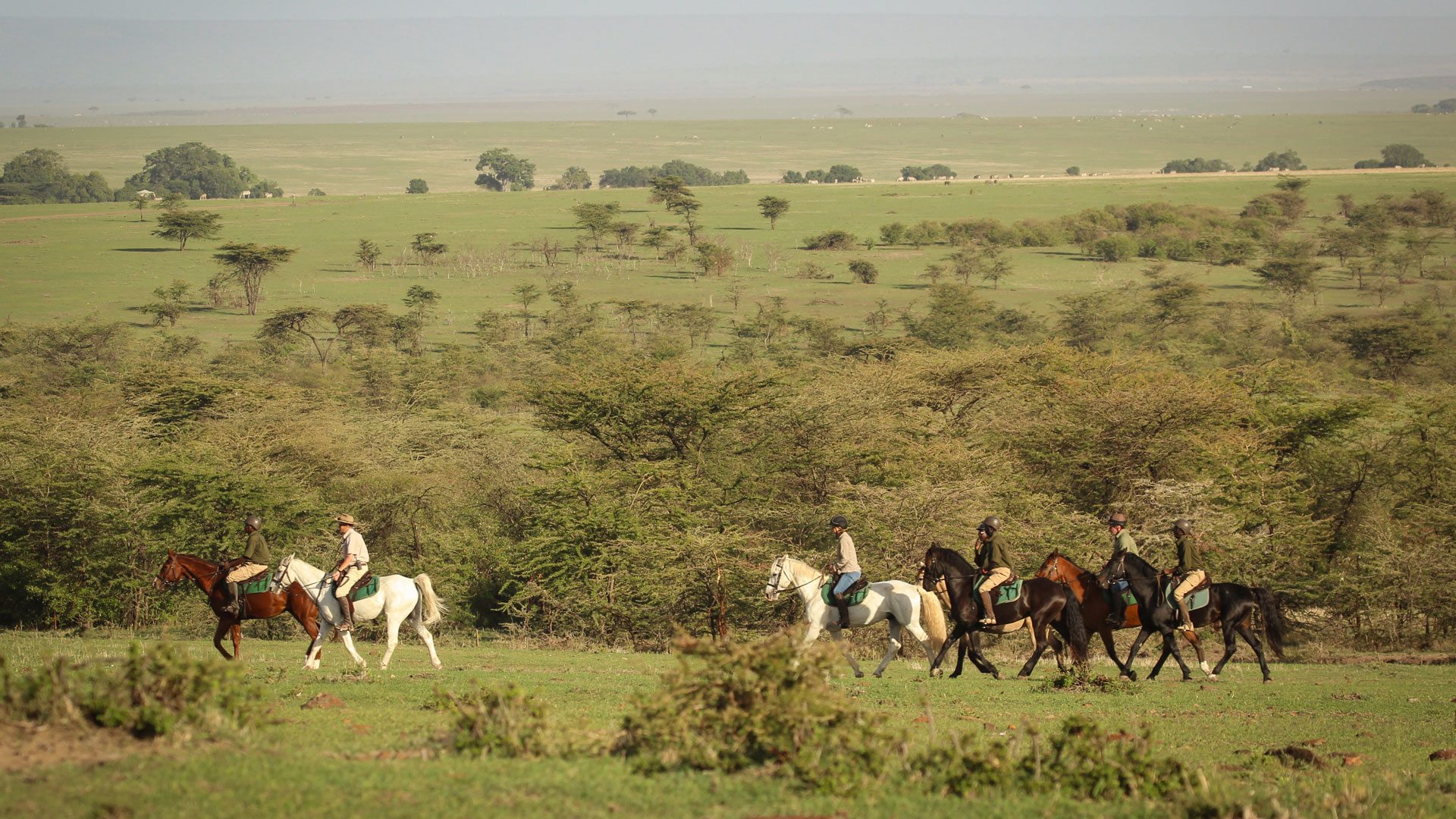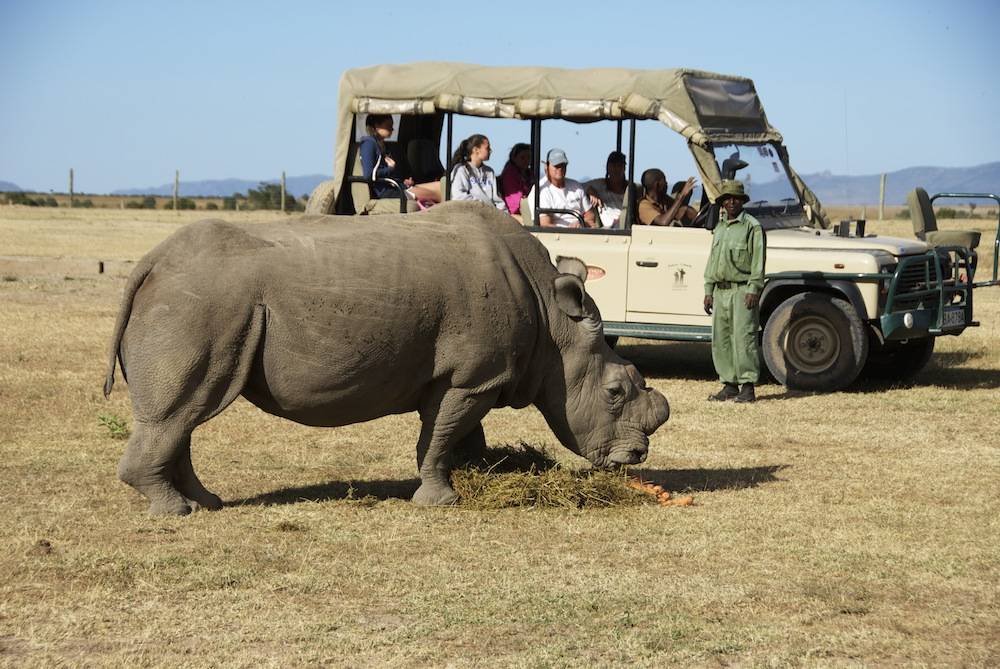Nairobi National Park is located in the heart of Nairobi, the capital metropolis of Kenya.…

Chyulu Hills National Park
Chyulu Hills National Park is located southeast of Nairobi. This national park is located inside the Tsavo West National Park and the Amboseli Ecosystem. This national park’s environment consists of emerald green undulating hills and lush woods that have been renowned as the “green hills of Africa”. Earnest Hemmingway referred to the Chyulu hills as the “green hills of Africa,” which inspired his book “Green Hills of Africa”.
These hills are volcanic in character, with ash cones and craters formed by volcanic eruptions more than 240 years ago. Chyulu Hills also serve as a water catchment area for Mzima springs, the Tsavo River, and the Galana River.
Chyulu Hills National Park protects indigenous plant and wildlife, which range from the forested area in the hills’ east to the unfenced western half of the Chyulu game conservation area, which is controlled by many Maasai group ranches.
The Chyulu hills’ slopes are scattered with various types of vegetation, including harsh grassland and thicket, patches of montane forest, and huge tracts of forest with a diversity of tree species in the central-southern region of the hills.
The hills of Chyulu Hills National Park contain no permanent surface water, yet rainfall that percolates through the porous rocks supplies water to many permanent water sources in the adjacent lowlands. The water joins with Mt. Kilimanjaro’s networks, feeding watercourses such as the Mzima springs.
These hills are located in the northernmost part of Tsavo West National Park and border Mkueni and Taita Taveta counties.
The dense thickets of Chyulu Hills National Park also serve as a water catchment region for wildlife, cattle, and neighbouring settlements, as well as a habitat for the park’s many wildlife populations.The environment of Chyulu Hills National Park engages a range of wildlife species in a fierce battle for accessible water and pasture due to the presence of livestock owned by local residents that compete with the wildlife species.
How to get to Chyulu Hills National Park?
By road, from Nairobi to Mombasa, then through Emali to Loitokitok.
Air travel options include scheduled flights from Wilson airport to Chyulu Hills airstrip, as well as domestic and chartered flights to Ol Donyo airstrip and Campi ya Kazi airstrip.
Attractions of Chyulu Hills National Park
Attractions in Chyulu Hills National Park include the following:
Levithan Cave is thought to be the longest and deepest lava tube formed by tectonic plate movement. These caverns are classified as higher Levithian and lower Levithian, produced by hot lava flowing beneath a cooled crust. Getting to the caverns requires people to hike through the difficult countryside, with the option of driving along a motorable road. The caverns are well-known among geologists and volcanologists, which has led to their global popularity. The Levithian caves are known locally as “Kisula cave”. Flashlights are utilised throughout these cave investigations, which resemble a natural art gallery with its various coloured walls and cone-shaped stalagmites hanging above sections of the wall formed by cooled lava.
Giraffes, zebras, cheetahs, lions, wildebeest, impala, bushbuck, oryx, eland, reedbuck, steinbok, klipspringer, sykes monkeys, and a variety of other wildlife species can be seen grazing along the hills’ low crest. The eastern black rhino, one of the few surviving black rhino species, can be seen in the national park’s northern areas.
Activities at Chyulu Hills National Park
Game viewing is best done in the morning, and despite the low density of wildlife species in this national park, a variety of wildlife species can be seen, including eastern black rhino, common eland, bush pig, masai giraffe, African leopard, lion, mountain reedbuck, steinbok, wildebeest, and Grant’s zebra. Cheetahs can be seen on the plains of the Chyulu Hills. The various wildlife species can be seen as they roam the national park in search of water and grazing. During the dry season, wildlife congregates near wetlands and other water sources, competing for pasture and water with cattle owned by local communities. The wet season disperses species to seek water in the surrounding plains.
Hiking at Chyulu Hills National Park rewards visitors with volcanic scenery and the beauty of nature in the Chyulu Hills, one of the world’s youngest ranges. Hikes in this national park extend from spectacular grassy plains to higher green and foggy peaks. Chyulu Hills offers a glimpse of the Mt. Kilimanjaro ranges in the background, which is an amazing experience for hikers. This national park has numerous and handy routes that cross the park and allow visitors to explore the wilderness. The Chyulu hills have a slope that is suited for even the most inexperienced hiker, providing a gratifying and less hard hiking experience to tourists.
Bushwalks involve tourists in walks with various vistas for them to see, such as the verdant acacia woodlands shown below. Various plant species, including orchid-like blossoms, can be seen in the heavy mists of the Chyulu hills.
Horseback riding at Chyulu Hills National Park allows travellers to set out on horseback and go across the various landscape, providing a unique game viewing experience with close encounters with wildlife species in the park.

Mountain biking involves riding through a gorgeous landscape at the Park, which includes deep marshes, edgy trees, and twists and turns beneath the hills.
Cultural contacts include interaction with the local population, which consists of Maasai who rely on and guard the land. The Kamba people also live in the Chyulu Hills National Park area. The Masai are mostly pastoralists who raise a range of livestock such as cattle and goats.
Birding entails seeing various bird species such as Shelley’s falcon, cinnamon bracken warbler, crowned eagle, Ayres hawk eagle, martial eagle, Abbot’s sterling, and many others in the endless plains cut by rugged deep black lava flows that provide diverse habitat for wildlife and bird species. Birds range from endemic to native species. Chyulu Hills National Park also has forest birds such as the Abyssinian crimson wing, terrestrial pigeon, cinnamon dove, and many other species. Lake Jipe, located in the park’s southwest portion, is a good birdwatching location.
Chyulu-hills-cinder-cones
The Chyulu Hills National Park has two lodges, while the remainder of the housing facilities are located outside the park and are rated as luxury, midrange, and cheap.
Campi ya Kazi and Ol Donyo lodge are the only luxury accommodations offered in the Chyulu Hills National Park on the western slopes.
As you tour Africa’s green hills, marvel at the majestic foliage and spectacular scenery vistas of Kenya’s most scenic terrain, the Chyulu Hills.



